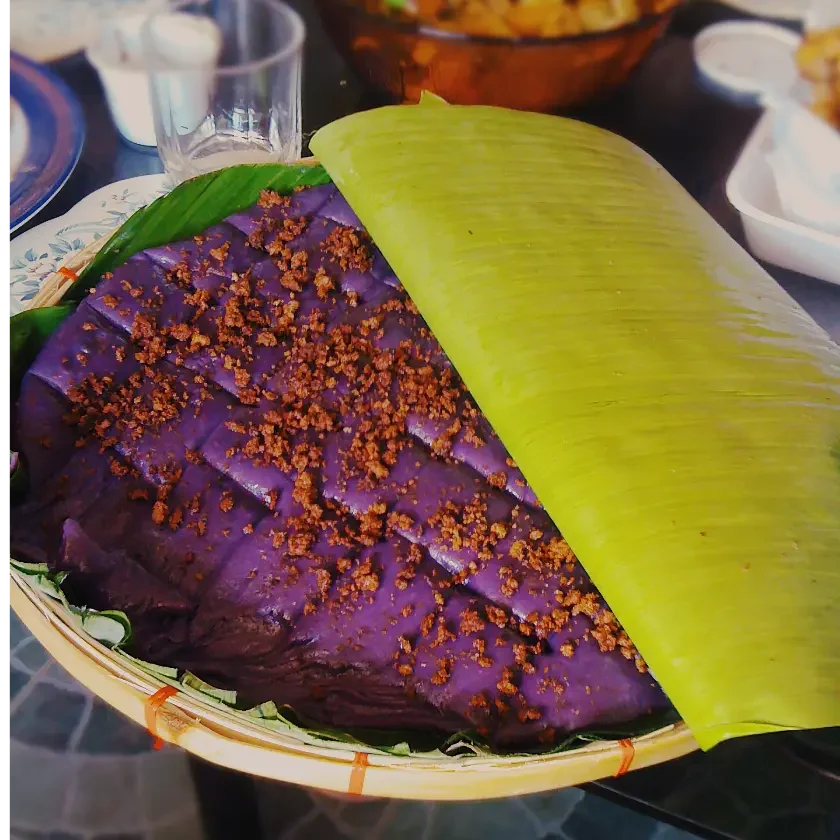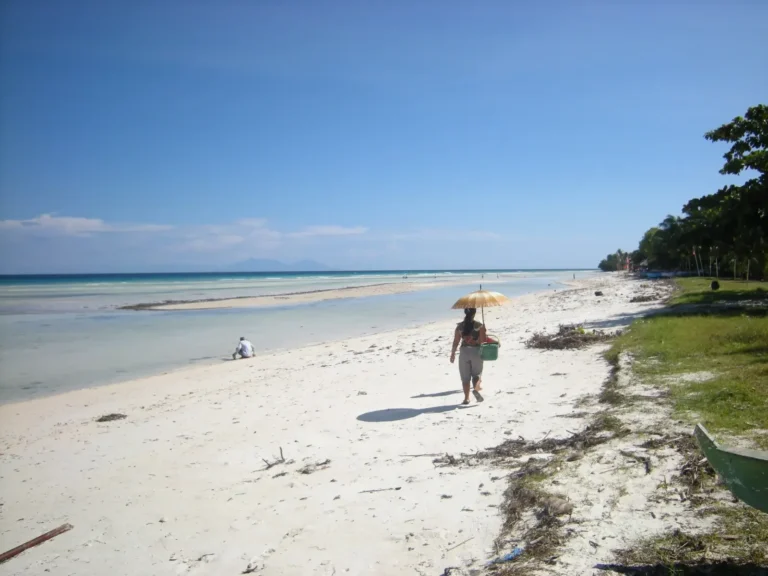Bohol Kalamay: Guide to the Philippines’ Most Famous Sticky Rice Delicacy
When food enthusiasts discuss Filipino delicacies, Bohol kalamay inevitably dominates the conversation as the gold standard of sticky rice confections! This beloved Philippine sweet represents far more than a simple dessert – it’s a cultural treasure that embodies centuries of Bohol food tradition, agricultural heritage, and artisan craftsmanship. From the legendary Jagna kalamay that started it all to modern variations found across the island’s 47 municipalities, Bohol’s version of this traditional Filipino dessert has achieved legendary status among locals and tourists seeking authentic tropical treats.
The Rich History of Bohol Kalamay
Bohol kalamay traces its origins to pre-colonial times when indigenous communities developed preservation techniques for glutinous rice harvests. The Spanish colonial period introduced new cooking methods and ingredients, while Chinese trade influence contributed techniques for achieving the perfect sticky consistency that defines authentic kalamay.
The town of Jagna emerged as the undisputed capital of Bohol kalamay production during the early 1900s when local families perfected recipes using abundant coconut palms and rice paddies across their coastal municipality. These pioneering kalamay makers established production methods that remain largely unchanged today, preserving authenticity while adapting to modern packaging and distribution needs.
Cultural Significance
Kalamay holds deep cultural meaning in Filipino society, particularly in Bohol where it represents:
- Hospitality traditions: Offered to honored guests and special visitors
- Religious observances: Used in church offerings and festival celebrations
- Family heritage: Recipes passed down through generations of women
- Economic empowerment: Primary income source for hundreds of families
- Cultural identity: Symbol of Bohol culinary excellence and pride
“My grandmother’s kalamay recipe has been in our family for over 80 years – each batch connects us to our ancestors and preserves our Bohol heritage!” – Rosa Mendoza, Fourth-Generation Kalamay Maker
Experience authentic kalamay-making traditions through our cultural immersion tours that include visits to traditional producers and hands-on cooking workshops with master artisans!
Understanding Authentic Bohol Kalamay
Traditional Ingredients
Authentic Bohol kalamay requires only three primary ingredients, but their quality and preparation methods determine the final product’s excellence:
Glutinous Rice (Malagkit)
- Local varieties: Specific glutinous rice strains grown in Bohol’s fertile plains
- Harvesting timing: Peak starch content crucial for proper texture
- Processing method: Traditional grinding techniques preserve rice structure
- Quality indicators: Pearl-white color, consistent grain size, minimal breakage
Coconut Milk (Gata)
- Fresh extraction: Daily coconut milk from mature local coconuts
- Extraction technique: Traditional grating and pressing methods
- Consistency requirements: Thick, creamy texture with natural sweetness
- Quality standards: No artificial additives or preservatives
Brown Sugar (Muscovado)
- Local production: Bohol sugarcane processed in traditional mills
- Natural processing: Minimal refinement preserves nutrients and flavor
- Color variations: Light to dark brown affecting final kalamay appearance
- Flavor profile: Complex molasses notes distinguishing premium versions
Traditional Cooking Process
Preparation Phase (2-3 hours):
Rice Preparation
- Soaking: Glutinous rice soaked overnight for optimal hydration
- Grinding: Traditional stone mills or modern equipment for smooth consistency
- Straining: Multiple filtrations ensure smooth, lump-free rice milk
- Quality control: Visual and texture inspection at each stage
Coconut Processing
- Fresh grating: Daily coconut preparation for optimal flavor
- Milk extraction: Traditional pressing techniques maximize yield
- Multiple extractions: First press for richness, subsequent for volume
- Temperature control: Maintaining optimal coconut milk temperature
Cooking Phase (4-6 hours):
Slow Cooking Process
- Low heat maintenance: Consistent temperature prevents burning
- Continuous stirring: Manual mixing ensures even cooking and prevents sticking
- Gradual thickening: Patient reduction creates proper sticky consistency
- Visual cues: Experienced cooks recognize perfect doneness indicators
Quality Monitoring
- Texture testing: Regular consistency checks throughout cooking
- Color development: Monitoring caramelization for optimal appearance
- Stirring technique: Specific motions prevent lumps and ensure smoothness
- Timing precision: Years of experience determine perfect completion
Finishing and Packaging:
Final Preparation
- Consistency adjustment: Fine-tuning texture for specific kalamay styles
- Container preparation: Traditional coconut shells or modern packaging
- Cooling process: Proper temperature reduction for optimal handling
- Quality inspection: Final checks before packaging and distribution
“Watching master kalamay makers work is like observing art in motion – every stir, every temperature adjustment comes from decades of inherited knowledge!” – Culinary Anthropologist Dr. Carmen Rivera
Regional Variations Across Bohol
Jagna Kalamay: The Original Standard
Jagna remains the acknowledged birthplace and quality benchmark for Bohol kalamay, with local producers maintaining traditional methods that have earned international recognition.
Jagna Kalamay Characteristics:
- Texture: Perfect balance of sticky and smooth consistency
- Color: Rich golden-brown from optimal brown sugar caramelization
- Flavor: Complex sweetness with subtle coconut and molasses notes
- Packaging: Traditional coconut shell containers (bao) or modern sealed containers
- Shelf life: 2-3 weeks without refrigeration, longer when properly stored
Famous Jagna Producers:
- Original Kalamay Makers: Family businesses operating for 3+ generations
- Cooperative producers: Community-based production groups
- Artisan shops: Small-scale producers focusing on premium quality
- Modern facilities: Scaled production maintaining traditional methods
Bilar Mountain Kalamay
Mountain town kalamay variations utilize different coconut varieties and cooking techniques adapted to higher altitude conditions.
Bilar Characteristics:
- Coconut source: Mountain coconut varieties with distinct flavor profiles
- Cooking method: Adapted techniques for different humidity and temperature
- Texture variation: Slightly firmer consistency due to environmental factors
- Local ingredients: Integration of mountain-grown flavor enhancers
Loboc River Town Kalamay
River town producers incorporate unique local ingredients and techniques influenced by their riverside environment.
Loboc Features:
- Water source: Pure river water affects cooking consistency
- Local variations: Subtle ingredient modifications reflecting local tastes
- Cultural integration: Kalamay featured in river cruise dining experiences
- Tourism focus: Packaging and presentation adapted for tourist market
Coastal Town Variations
Various coastal municipalities throughout Bohol produce kalamay with slight modifications reflecting local resources and preferences.
Regional Differences:
- Salt influence: Coastal areas may have subtle salinity affecting flavor
- Coconut varieties: Different palm varieties contribute unique characteristics
- Cooking fuel: Traditional wood types affect flavor development
- Cultural preferences: Local taste preferences influence sweetness levels
Explore regional kalamay variations through our comprehensive food tours that visit multiple production areas and include tastings with expert commentary on local differences!
Types and Styles of Bohol Kalamay
Traditional Consistency Categories
Soft Kalamay (Malambot)
Characteristics:
- Texture: Creamy, spreadable consistency similar to thick jam
- Uses: Eaten with rice cakes, bread, or consumed directly
- Storage: Requires cooler temperatures, shorter shelf life
- Popularity: Preferred by children and those who enjoy milder textures
Medium Kalamay (Katamtaman)
Characteristics:
- Texture: Balanced consistency that holds shape but remains soft
- Uses: Versatile for various serving methods and recipes
- Storage: Standard room temperature storage for 2-3 weeks
- Popularity: Most common variety, appeals to widest range of consumers
Firm Kalamay (Matigas)
Characteristics:
- Texture: Solid consistency that can be sliced and shaped
- Uses: Decorative presentations, special occasions, longer transport
- Storage: Extended shelf life, ideal for pasalubong and shipping
- Popularity: Traditional favorite for formal presentations and gifts
Modern Flavor Innovations
Classic Brown Sugar Kalamay
Traditional recipe: Original three-ingredient formula Flavor profile: Pure glutinous rice, coconut, and brown sugar harmony Cultural significance: Represents authentic Bohol culinary heritage Market position: Premium traditional option for purists
Ube Kalamay (Purple Yam)
Innovation: Purple yam integration creating vibrant color and flavor Visual appeal: Instagram-worthy purple hue attracting younger consumers Taste: Sweet potato notes complementing traditional kalamay base Market growth: Rapidly gaining popularity among tourists and locals
Pandan Kalamay
Flavoring: Pandan leaves providing natural green color and aroma Characteristics: Subtle vanilla-like fragrance and pale green appearance Traditional use: Pandan historically used in Filipino desserts Appeal: Natural flavoring attracting health-conscious consumers
Buko (Young Coconut) Kalamay
Addition: Fresh young coconut strips mixed into traditional kalamay Texture: Added chewiness and coconut flavor intensity Seasonal availability: Depends on young coconut harvest cycles Premium positioning: Higher prices due to additional ingredients and labor
Cashew Kalamay
Innovation: Cashew pieces incorporated for added texture and flavor Luxury positioning: Premium nuts creating upscale kalamay variety Local sourcing: Bohol cashew production supporting ingredient authenticity Price point: Higher cost reflecting cashew expense and processing complexity
“Modern kalamay innovations respect traditional methods while appealing to contemporary tastes – it’s beautiful to see ancient recipes evolving while maintaining their cultural essence!” – Food Innovation Specialist Maria Santos
Where to Find the Best Bohol Kalamay
Jagna: The Kalamay Capital
Traditional Family Producers
Kalamay ni Nanay Idad
- Location: Jagna town center, near public market
- Specialties: Traditional recipe maintained for 60+ years
- Production: Daily fresh batches using original methods
- Recognition: Multiple awards from tourism and culinary organizations
- Pricing: ₱150-300 per container depending on size
Lola Rosa’s Kalamay
- Heritage: Four-generation family business
- Specialties: Both traditional and innovative flavors
- Quality: Premium ingredients, consistent excellence
- Availability: Limited daily production, advance orders recommended
- Pricing: ₱200-400 per container
Jagna Kalamay Cooperative
- Community focus: Supporting local farmers and producers
- Standardization: Consistent quality across multiple producers
- Volume: Larger production capacity for wholesale orders
- Certification: Food safety and quality certifications
- Pricing: ₱120-250 per container, bulk discounts available
Modern Retail Locations
Jagna Public Market
- Variety: Multiple vendors offering different kalamay styles
- Freshness: Daily production from various local producers
- Price comparison: Competitive pricing, negotiation possible
- Authenticity: Direct from original producers
- Shopping experience: Traditional market atmosphere
Highway Roadside Stands
- Convenience: Easy access for travelers passing through Jagna
- Fresh production: Often still warm from recent cooking
- Tourist focus: Packaging suitable for pasalubong and travel
- Price: Slightly higher than market but includes convenience
Tagbilaran City Distribution
SM City Bohol
Advantages:
- Air conditioning: Comfortable shopping environment
- Quality control: Screened vendors, consistent product standards
- Variety: Multiple kalamay producers and flavors available
- Tourist convenience: Central location, easy transportation access
- Pricing: ₱180-350 per container
Island City Mall
Features:
- Local focus: Emphasis on authentic Bohol products
- Producer information: Vendor stories and production details available
- Gift packaging: Tourist-appropriate presentation options
- Quality assurance: Regular product freshness monitoring
- Pricing: ₱200-400 per container
Tagbilaran Public Market
Traditional experience:
- Authentic atmosphere: Local shopping environment
- Direct producers: Some Jagna producers sell directly
- Price advantages: Lower costs than tourist-focused shops
- Cultural immersion: Interaction with local vendors and customers
- Pricing: ₱120-280 per container
Airport and Tourist Areas
Panglao-Bohol International Airport
Convenience factors:
- Last-minute purchases: Final opportunity for kalamay shopping
- Quality selection: Airport shops curate better producers
- Gift packaging: Professional presentation for international travel
- Price premium: 20-30% higher than local markets
- Pricing: ₱250-500 per container
Alona Beach Area (Panglao)
Tourist convenience:
- Hotel proximity: Easy access from beach accommodations
- English-speaking vendors: Tourist-focused service
- Multiple varieties: Various flavors and styles available
- Shipping services: Some shops offer domestic shipping
- Pricing: ₱200-450 per container
Book our comprehensive kalamay tasting tours that visit authentic producers in Jagna, include production demonstrations, and provide expert guidance on selecting the best varieties for your preferences!
Kalamay Quality Assessment and Selection
Visual Quality Indicators
Color Assessment
Optimal appearance:
- Golden brown: Rich caramelization indicating proper brown sugar cooking
- Uniform color: Consistent throughout without dark spots or pale areas
- Natural variations: Slight color differences acceptable in artisan production
- Avoid: Gray tints, overly dark areas, or artificial-looking colors
Texture Evaluation
Surface quality:
- Smooth surface: Even consistency without lumps or irregular areas
- Proper gloss: Natural sheen from coconut oil content
- No separation: Oil and solid components properly integrated
- Consistency: Uniform texture throughout the container
Taste and Aroma Evaluation
Flavor Profile Assessment
Authentic taste characteristics:
- Balanced sweetness: Brown sugar sweetness without overwhelming intensity
- Coconut richness: Clear coconut flavor without artificial taste
- Rice consistency: Smooth glutinous rice texture without grittiness
- Complexity: Layered flavors developing during consumption
Aroma Indicators
Fresh kalamay characteristics:
- Natural coconut: Fresh coconut milk aroma without rancidity
- Caramelized sugar: Pleasant brown sugar caramelization scents
- No off-odors: Absence of sour, artificial, or fermented smells
- Intensity: Rich, inviting aroma indicating quality ingredients
Packaging and Storage Considerations
Traditional Packaging
Coconut shell containers (bao):
- Authenticity: Traditional presentation method
- Natural preservation: Coconut shell provides some protection
- Cultural significance: Historical packaging method
- Limitations: Shorter shelf life, transport challenges
Modern Packaging
Sealed containers:
- Extended shelf life: Better preservation for longer storage
- Transport convenience: Easier shipping and handling
- Hygiene advantages: Better contamination protection
- Tourism focus: Professional appearance for pasalubong
Storage and Handling Tips
Optimal Storage Conditions
Temperature control:
- Room temperature: 20-25°C ideal for most kalamay varieties
- Avoid heat: Direct sunlight and high temperatures cause texture changes
- Refrigeration: Optional for extended storage but may affect texture
- Freezing: Not recommended as it significantly alters consistency
Shelf Life Management
Consumption timeline:
- Fresh consumption: Best within 1-2 weeks of production
- Extended storage: 2-4 weeks possible with proper conditions
- Quality indicators: Texture and aroma changes indicate aging
- Safety considerations: Discard if mold, off-odors, or texture separation occurs
“Learning to evaluate kalamay quality transformed my appreciation for this delicacy – understanding what makes exceptional kalamay helps you find the best producers and enjoy authentic flavors!” – Culinary Tourism Expert David Chen
Kalamay in Bohol Culture and Traditions
Religious and Ceremonial Uses
Church Offerings
Traditional practices:
- Feast day offerings: Kalamay presented during patron saint celebrations
- First fruits: New kalamay blessed before consumption
- Community sharing: Distribution during religious gatherings
- Symbolic meaning: Sweetness representing divine blessings
Life Celebrations
Important occasions:
- Baptisms: Kalamay served during post-ceremony celebrations
- Weddings: Traditional sweet representing life’s sweetness
- Graduations: Success celebrations featuring family kalamay recipes
- Homecomings: Pasalubong tradition for returning family members
Economic and Social Impact
Community Employment
Economic benefits:
- Family businesses: Hundreds of families dependent on kalamay production
- Seasonal employment: Additional workers during peak tourism periods
- Skill development: Traditional techniques passed to younger generations
- Women’s empowerment: Predominantly female-led enterprise providing income independence
Tourism Integration
Cultural tourism:
- Culinary tours: Kalamay production visits becoming popular attractions
- Cultural demonstrations: Production workshops for tourist education
- Festival integration: Kalamay featured prominently in cultural celebrations
- Economic multiplier: Tourism increasing demand and prices for quality kalamay
Educational and Cultural Preservation
Traditional Knowledge Transfer
Skills preservation:
- Family apprenticeships: Daughters learning from mothers and grandmothers
- Community workshops: Formal training programs for interested learners
- Documentation efforts: Recording traditional techniques and recipes
- Cultural centers: Museums and cultural sites featuring kalamay history
Modern Adaptations
Contemporary relevance:
- Social media: Young producers using technology for marketing
- Quality improvements: Modern equipment enhancing traditional methods
- Market expansion: Online sales reaching national and international customers
- Innovation balance: Maintaining authenticity while adapting to modern preferences
Support traditional kalamay culture and community development through our cultural heritage tours that include visits to master artisans, traditional cooking demonstrations, and fair-trade purchasing opportunities!
Health Benefits and Nutritional Information
Traditional Medicinal Uses
Historical Health Applications
Traditional beliefs:
- Energy provision: High carbohydrate content for sustained energy
- Digestive aid: Glutinous rice traditionally used for stomach comfort
- Respiratory support: Coconut milk believed beneficial for throat and chest
- Recovery food: Kalamay given to convalescing individuals for strength
Modern Nutritional Understanding
Nutritional components:
- Complex carbohydrates: Sustained energy release from glutinous rice
- Healthy fats: Medium-chain fatty acids from coconut milk
- Natural sugars: Unrefined brown sugar providing minerals and antioxidants
- Mineral content: Potassium, magnesium, and iron from natural ingredients
Dietary Considerations
Caloric Content
Energy density:
- High calorie: Approximately 300-400 calories per 100g serving
- Portion awareness: Small servings recommended due to richness
- Activity balance: Best consumed when physical activity planned
- Moderation: Occasional treat rather than regular dietary staple
Allergen Information
Common concerns:
- Gluten-free: Glutinous rice contains no gluten despite name
- Coconut allergies: Significant coconut content requires awareness
- Sugar content: High natural sugar content affecting diabetic considerations
- Processing: Traditional methods generally avoid common allergen cross-contamination
Modern Health Trends
Natural Ingredients Appeal
Health-conscious consumers:
- Minimal processing: Simple, recognizable ingredients
- No artificial additives: Traditional recipes avoid chemical preservatives
- Local sourcing: Fresh, locally-produced ingredients
- Artisan production: Small-batch, handmade quality
Functional Food Potential
Emerging research:
- Coconut milk benefits: Medium-chain triglycerides and antimicrobial properties
- Brown sugar minerals: Retains molasses nutrients unlike refined sugar
- Glutinous rice properties: Potential prebiotic effects supporting gut health
- Traditional wisdom: Modern science validating historical medicinal uses
Making Kalamay at Home: Simplified Approach
Basic Home Recipe
Ingredients (Simplified Version):
- 2 cups glutinous rice flour: Commercial flour substitute for traditional grinding
- 1 can (400ml) coconut milk: High-quality canned coconut milk
- 1 cup brown sugar: Muscovado or organic brown sugar preferred
- 1/2 cup water: For consistency adjustment
- Pinch of salt: Enhances flavor balance
Equipment Needed:
- Heavy-bottomed pot: Prevents burning during long cooking process
- Wooden spoon: For continuous stirring without scratching
- Fine strainer: Removing any lumps from mixture
- Storage containers: Glass or plastic containers for finished kalamay
Simplified Cooking Process:
Preparation (30 minutes):
- Mix flour and water: Create smooth paste without lumps
- Strain mixture: Remove any remaining flour lumps
- Prepare coconut milk: Shake can thoroughly, measure accurately
- Set up cooking area: Organize all ingredients and tools
Cooking Process (2-3 hours):
- Combine ingredients: Mix flour paste, coconut milk, and brown sugar
- Heat slowly: Begin cooking on low heat with constant stirring
- Continuous stirring: Never stop stirring to prevent burning and sticking
- Gradual thickening: Patience required as mixture slowly reduces and thickens
- Test consistency: Kalamay ready when spoon stands upright in mixture
Finishing Steps:
- Final seasoning: Add salt pinch, adjust sweetness if needed
- Container preparation: Grease containers lightly with coconut oil
- Pour and cool: Transfer hot kalamay to containers, allow cooling
- Storage: Store at room temperature, consume within one week
Tips for Home Success
Common Mistakes to Avoid:
- High heat: Causes burning and uneven cooking
- Insufficient stirring: Results in lumps and sticking
- Wrong consistency: Too thick or thin affects final texture
- Premature stopping: Undercooking produces poor texture
Quality Improvements:
- Fresh coconut milk: Extract from fresh coconuts when possible
- Quality brown sugar: Use unrefined, organic varieties
- Patience: Allow proper cooking time for best results
- Practice: Skills improve with repeated attempts
“Making kalamay at home helped me appreciate the skill required by traditional producers – it’s much harder than it looks, and the authentic versions are definitely superior!” – Home Cooking Enthusiast Lisa Rodriguez
The Future of Bohol Kalamay
Market Trends and Opportunities
Tourism Growth Impact
Expanding markets:
- International recognition: Growing awareness among international visitors
- Culinary tourism: Kalamay production tours becoming popular attractions
- Online sales: E-commerce platforms expanding market reach
- Premium positioning: Quality kalamay commanding higher prices
Innovation Directions
Product development:
- Flavor innovations: New variations while maintaining traditional base
- Packaging improvements: Extended shelf life and improved transport
- Health adaptations: Lower sugar, organic, and specialty diet versions
- Gift market: Premium presentation for corporate and special occasion gifts
Sustainability and Community Development
Environmental Considerations
Sustainable practices:
- Local sourcing: Supporting Bohol coconut and rice farmers
- Traditional methods: Lower environmental impact than industrial production
- Packaging evolution: Biodegradable and eco-friendly packaging options
- Carbon footprint: Local production reducing transportation impacts
Community Benefits
Economic development:
- Skill preservation: Training programs maintaining traditional knowledge
- Income generation: Expanding opportunities for rural communities
- Cultural pride: Recognition increasing community appreciation
- Tourism integration: Kalamay production supporting broader tourism industry
Cultural Preservation Efforts
Documentation Projects
Heritage preservation:
- Recipe recording: Documenting traditional family recipes
- Technique videos: Visual preservation of production methods
- Oral history: Recording stories and cultural significance
- Museum exhibits: Cultural centers featuring kalamay heritage
Educational Programs
Knowledge transfer:
- School programs: Teaching young people traditional skills
- Cultural workshops: Community-based learning opportunities
- Tourism education: Training guides to explain kalamay significance
- International exchange: Sharing Filipino culinary culture globally
Experiencing the Sweet Essence of Bohol
Bohol kalamay represents far more than a simple sweet treat – it embodies the island’s agricultural heritage, culinary artistry, and cultural identity in every sticky, delicious bite. This remarkable Filipino delicacy connects generations through shared recipes, techniques, and traditions that have survived centuries while adapting to modern tastes and markets.
From the legendary producers of Jagna who maintain time-honored methods to innovative artisans creating contemporary variations, Bohol kalamay continues evolving while preserving its essential character. The dedication of local producers, the support of proud communities, and the enthusiasm of visitors from around the world ensure that this cultural treasure will continue delighting future generations.
Whether you’re seeking authentic pasalubong to share with loved ones, exploring Filipino culinary traditions, or simply satisfying your sweet tooth with one of the Philippines’ finest desserts, Bohol kalamay offers experiences that extend far beyond taste. Each container tells stories of family heritage, community cooperation, and cultural pride that make this humble sticky rice confection truly extraordinary.
Visit Bohol to experience kalamay in its birthplace, meet the artisans who create it, and understand the cultural significance that makes this delicacy so special. The sweetness of kalamay will linger in your memory long after the last bite, reminding you of the warmth, creativity, and hospitality that define Bohol culture.
Ready to discover the authentic flavors and cultural significance of Bohol kalamay? Book your comprehensive culinary adventure through our trusted partners to experience traditional production methods, meet master artisans, and taste the finest kalamay varieties in their cultural context!
Support our comprehensive travel guides by booking through our trusted partners. These affiliate partnerships help us provide detailed, honest reviews while ensuring you receive excellent service for your Bohol culinary experiences and access to the most authentic kalamay producers and cultural sites!







